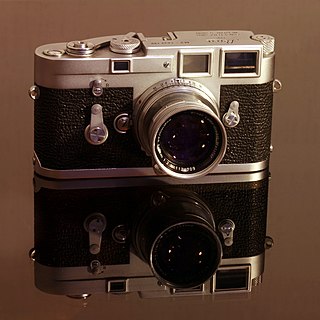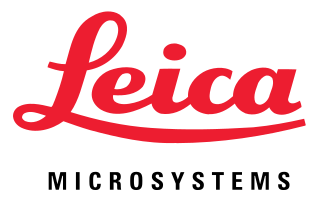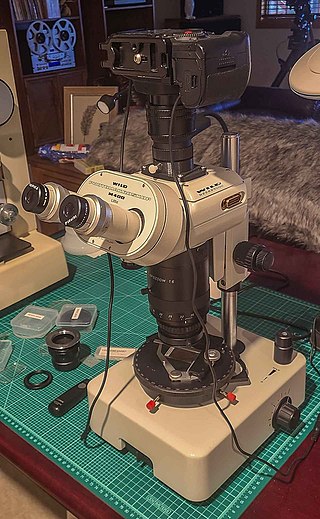
A rangefinder camera is a camera fitted with a rangefinder, typically a split-image rangefinder: a range-finding focusing mechanism allowing the photographer to measure the subject distance and take photographs that are in sharp focus. Most varieties of rangefinder show two images of the same subject, one of which moves when a calibrated wheel is turned; when the two images coincide and fuse into one, the distance can be read off the wheel. Older, non-coupled rangefinder cameras display the focusing distance and require the photographer to transfer the value to the lens focus ring; cameras without built-in rangefinders could have an external rangefinder fitted into the accessory shoe. Earlier cameras of this type had separate viewfinder and rangefinder windows; later the rangefinder was incorporated into the viewfinder. More modern designs have rangefinders coupled to the focusing mechanism so that the lens is focused correctly when the rangefinder images fuse; compare with the focusing screen in non-autofocus SLRs.

Leica Camera AG is a German company that manufactures cameras, optical lenses, photographic lenses, binoculars, and rifle scopes. The company was founded by Ernst Leitz in 1869, in Wetzlar, Germany. The name Leica is derived from the first three letters of the founder's surname (Leitz) and the first two of the word camera: lei-ca.

Carl Zeiss AG, branded as ZEISS, is a German manufacturer of optical systems and optoelectronics, founded in Jena, Germany in 1846 by optician Carl Zeiss. Together with Ernst Abbe and Otto Schott he laid the foundation for today's multinational company. The current company emerged from a reunification of Carl Zeiss companies in East and West Germany with a consolidation phase in the 1990s. ZEISS is active in four business segments with approximately equal revenue in almost 50 countries, has 30 production sites and around 25 development sites worldwide.

A total station or total station theodolite is an electronic/optical instrument used for surveying and building construction. It is an electronic transit theodolite integrated with electronic distance measurement (EDM) to measure both vertical and horizontal angles and the slope distance from the instrument to a particular point, and an on-board computer to collect data and perform triangulation calculations.

The Leica M3 is a 35 mm rangefinder camera by Ernst Leitz GmbH, introduced in 1954. It was a new starting point for Leitz, which until then had only produced screw-mount Leica cameras that were incremental improvements to its original Leica (Ur-Leica). The M3 introduced several features to the Leica, among them the combination of viewfinder and rangefinder in one bright window, like on the Contax II, a bayonet lens mount, and rapid film advance lever. It was the most successful model of the M series, with over 220,000 units sold by the time production of the M3 model ended in 1966.
Intergraph Corporation was an American software development and services company, which now forms part of Hexagon AB. It provides enterprise engineering and geospatially powered software to businesses, governments, and organizations around the world, and operates through three divisions: Hexagon Asset Lifecycle Intelligence, Hexagon Safety & Infrastructure, and Hexagon Geospatial. The company's headquarters is in Huntsville, Alabama, United States.
Hexagon AB is a multinational industrial technology company. Headquartered in Stockholm, Sweden and publicly traded on the Nasdaq Stockholm exchange, the company since 2000 has had a particular focus on measuring technology and geospatial tools and software. After its founding, between 2000 and 2022, Hexagon completed more than 170 acquisitions, and it is the parent company of Leica Geosystems and Infor EAM, among other subsidiaries. With around 24,000 employees, Hexagon's revenue in 2023 was US$5.5 billion, while assets were $18.1 billion.
A GIS software program is a computer program to support the use of a geographic information system, providing the ability to create, store, manage, query, analyze, and visualize geographic data, that is, data representing phenomena for which location is important. The GIS software industry encompasses a broad range of commercial and open-source products that provide some or all of these capabilities within various information technology architectures.
ECW is a proprietary wavelet compression image format used for aerial photography and satellite imagery. It was developed by Earth Resource Mapping, which is now owned by Intergraph, part of Hexagon AB. It is a lossy compression format for images.

Carl Kellner was a German mechanic and self-educated mathematician who founded in 1849 an "Optical Institute" that later became the Leitz company, makers of the Leica cameras.

The Wild (Heerbrugg) company (pronounced "vilt") was founded in 1921 in Switzerland. The company manufactured optical instruments, such as surveying instruments, microscopes and instruments for photogrammetry among others. The company changed its name several times, first being known as "Heinrich Wild, Werkstätte für Feinmechanik und Optik", then "Verkaufs-Aktiengesellschaft Heinrich Wild's Geodätische Instrumente", later "Wild Heerbrugg AG", later "Wild-Leitz". The company was linked with Leica in 1989, then it became part of Leica Holding B.V. Its subsidiary Leica Geosystems AG became part of the Swedish Hexagon AB Group of companies in 2005.

Heinrich Wild was a Swiss businessman, industrial designer, and inventor who was the founder of Wild Heerbrugg, a Swiss optical instruments manufacturing company.
IMAGINE Photogrammetry is a software application for performing photogrammetric operations on imagery and extracting information from imagery. IMAGINE Photogrammetry is significant because it is a leading commercial photogrammetry application that is used by numerous national mapping agencies, regional mapping authorities, various DOTs, as well as commercial mapping firms. Aside from commercial and government applications, IMAGINE Photogrammetry is widely used in academic research. Research areas include landslide monitoring, cultural heritage studies, and more.

Leica Microsystems GmbH is a German microscope manufacturing company. It is a manufacturer of optical microscopes, equipment for the preparation of microscopic specimens and related products. There are ten plants in eight countries with distribution partners in over 100 countries. Leica Microsystems emerged in 1997 out of a 1990 merger between Wild-Leitz, headquartered in Heerbrugg Switzerland, and Cambridge Instruments of Cambridge England. The merger of those two umbrella companies created an alliance of the following 8 individual manufacturers of scientific instruments. American Optical Scientific Products, Carl Reichert Optische Werke AG, R.Jung, Bausch and Lomb Optical Scientific Products Division, Cambridge Instruments, E.Leitz Wetzlar, Kern & Co., and Wild Heerbrugg AG, bringing much-needed modernization and a broader degree of expertise to the newly created entity called Leica Holding B.V. group. In 1997 the name was changed to Leica Microsystems and is a wholly-owned entity of Danaher Corporation since July 2005. Danaher is a US venture capital company.

Biogon is the brand name of Carl Zeiss for a series of photographic camera lenses, first introduced in 1934. Biogons are typically wide-angle lenses.
Leica Biosystems is a medical devices company that develops and supplies clinical diagnostics to the pathology market. It is also a research, instrument, and medical device company as well as a division of Danaher Corporation.
Ernst Leitz GmbH was a German corporation based in Wetzlar, a German centre for optics as well as an important location for the precision engineering industry.

Ola Rollén is a Swedish entrepreneur and businessman. He retired as CEO of Hexagon AB, a global technology firm on December 31, 2022.

A macroscope or photomacroscope in its camera-equipped version is a type of optical microscope developed and named by Swiss microscope manufacturers Wild Heerbrugg and later, after that company's merger with Leica in 1987, by Leica Microsystems of Germany, optimised for high quality macro photography and/or viewing using a single objective lens and light path, rather than stereoscopic viewing of specimens, at magnifications up to around x40. The Wild, subsequently Leica "macroscope" line was in production from approximately 1976–2003; it was succeeded by the Leica Z6 and Z16 offerings, which continued an equivalent functionality, but without the "macroscope" designation. The macroscope remains a useful, if somewhat specialised, instrument for examination of relevant specimens in various laboratories today.

The Leicaflex series of high-end single-lens reflex 35 mm format film cameras were introduced by Leitz Camera in 1964. The first camera body was paired with the new R bayonet series of lenses. Three model of the cameras were sold by Leitz; the Leicaflex Standard, the Leicaflex SL and the Leicaflex SL2.















